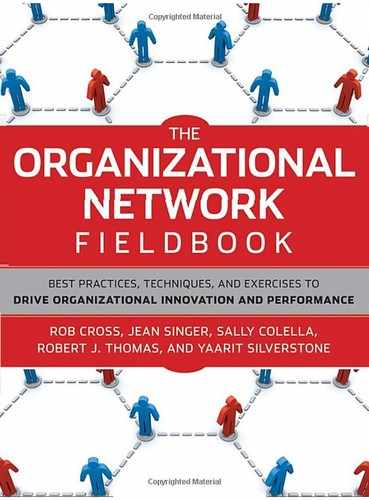13.3. Quantifying the Costs of Inefficient Decision Making
The team had to convince top leaders at Cedarwood that concentrating decision making at the VP level was hurting—not helping—the company. Team members knew that most of the company's executives had strong backgrounds in science or marketing and thus would be particularly receptive to graphic and numerical representations of the problem.
The team began by showing Cedarwood's decision-making network maps to executives and pointing out their centrality in the networks. The message was: "The good news is that you're clearly important to the business. However, your centrality is also creating a problem." One VP remarked:
It wasn't until I saw myself and my fellow VPs at the center of these networks that I realized just how reliant other positions were on us. I feel like I'm making things happen all the time, but that really isn't true. It's just a bubble of activity around me. I was missing a lot of things on the edge of the network, where key innovations should be happening. I suddenly felt horrible about ... holding up a tremendous amount of activity.
The team then translated the impact of inefficient, overly hierarchical decision processes into sobering numbers that executives could understand and appreciate. For example, it aggregated and converted time spent in decision making into "interaction costs" (by multiplying time in collaborations by loaded compensation figures). These calculations showed that inefficient decision making consumed 17,400 hours of people's time each month, which translated into a staggering $1.4 million per month in labor costs (see Figure 13.4). The team also quantified the opportunity costs of sluggish decision processes, including revenues lost because of delayed new-product introductions.
By quantifying these costs, the team showed senior leaders that they needed to begin distancing themselves from some decisions. At the same time, they had to empower others in the organization to take responsibility for decisions they were best positioned to handle. This delegating of decision-making authority would not only speed up decision processes but also develop employees' leadership skills—creating a deeper bench that Cedarwood could draw from in the future.
Figure 13.4. THE HIGH PRICE OF INEFFICIENT DECISION MAKING

